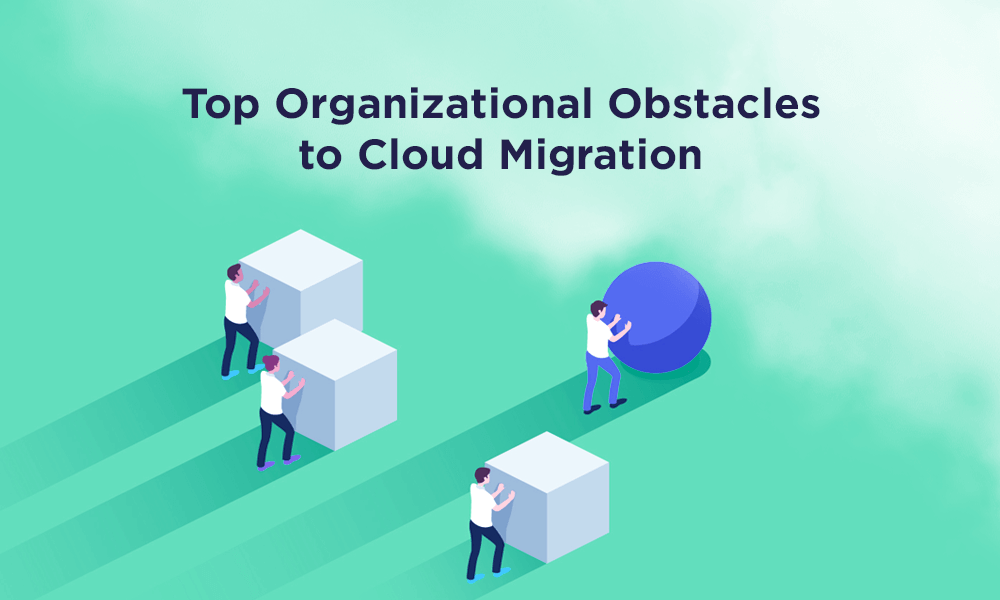The future is in the cloud. This is something that is being constantly written and spoken about, most of us know and accept this. We have acknowledged the many benefits for workplaces and remote working, and we hear about the statistics of increased spending: the public cloud service market is expected to reach $623.3 billion by 2023 worldwide. So what is stopping so many businesses from effectively completing cloud migration already?
What is Cloud Migration?
Cloud Migration is the process of moving data, applications, or other business elements to a cloud computing environment. Moving to the cloud is not a one-step process, unfortunately. There is a huge amount of designing, tool selection, and strategizing that goes into the migration effort that suits a business’ specific needs. This process can be straightforward and a guaranteed success if you ensure the following obstacles and problems are not present in your move to the cloud:
1. Not understanding exactly why you need the cloud
To achieve a seamless move to the cloud, it is vital to know exactly why you want this change. It is not useful to make this decision because that is what everyone else is doing, as you will find yourself constantly trying to catch up with modern trends.
The cloud can benefit your business greatly, so it’s great to think of specific goals. These could be centered around: agility, availability, disaster recovery capabilities, scalability, and enhanced security. Set high goals with specific quantifiable achievements that you can cross-reference during cloud migration.
2. Not utilizing the top leadership in the process
Many efforts of cloud migration quickly fail because there is a temptation to skip costs by not buying in from top leadership. To put it simply, you are not just changing your databases but your entire business will be transformed through cloud migration, and so you must select a leader. This person should be at the highest level possible of your organization, they should be initiative and have the authority to remove any issues that will occur during the process of migration.
3. Insufficient team members
The people who will be executing the move to the cloud need to have the right skill set. Have they been adequately trained? It is key that these individuals have previous experience in cloud migration and are open-minded to keep learning and strategizing.
Once you have this team, you can peacefully allow them to work without them needed you to authorize decisions. Pick people you can trust and it will make the cloud migration run smoothly.
4. No new technical leaders who are the experts
While it is key to have buy-in from the top of your business to get things going (obstacle #2), you will still need a cloud expert. During the process, there will be hundreds of questions to be answered and decisions to be made regarding security policies, integrations between different systems, and the choices of what architecture to use, just three of many examples. Therefore, you will need someone who knows exactly what they are doing to take on the role of a leader.
5. A lack of communication
The cloud migration process is not straightforward; there is a constant flux of ideas, new people, pieces of information. It is critical that open communication takes place from the beginning of the process to the very end. There is no need to complicate this; a simple weekly meeting, an email distribution list, a Slack channel are all great ways to keep everyone updated without bombarding them. Go into detail with the progress you are making and openly discuss the challenges you are facing.
6. An unclear organizational structure
This is often the biggest obstacle. Since moving to the cloud requires a complete organizational transformation of a business, it means the bigger the business, the more complicated the migration is.
What needs to be considered is how the existing organizational structure will evolve to support the end state of migration where technology will be developed and maintained using the cloud. This could mean your current teams may need to change to support the completed migration, some departments may not be needed anymore and perhaps new ones will be needed to take their place. What culture will the organization embrace moving forward? Having these decisions made into a solidified structure makes cloud migration a real possibility.
7. Undeveloped project management
Cloud migration can take much longer than you might think hence why having efficient project management is necessary. Great project management can look like selecting project managers, having clear reporting structures, and identifying who is working on each task. These all go hand in hand with communication.
8. No prioritization
Being capable to prioritize the tasks will make the process of cloud migration a lot less stressful. To prioritize, you need to know how much time each task will need and how many people will need to be involved. This can then be communicated to those people. Trello is a great team application to use to display these lists of tasks for everyone to see.
How VUSE can help
It cannot be underestimated how vital it is to have a clear strategy for your move to the cloud, conducted by individuals who are experts at cloud migration who can understand what a business truly needs. This is exactly how VUSE can step in to help you. VUSE is a cloud-native product engineering agency helping organizations transform digitally. Our certified engineers and cloud experts build, manage, and modernize applications and platforms empowering our clients to close the gap between now and next. With extensive experience in public cloud infrastructure, our team works with your organization to better manage and protect your cloud. Want to discuss this further, why not contact us?


